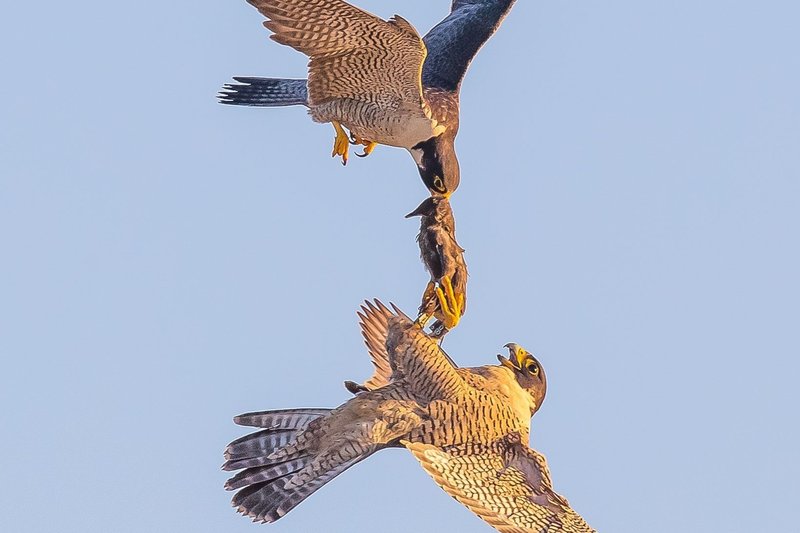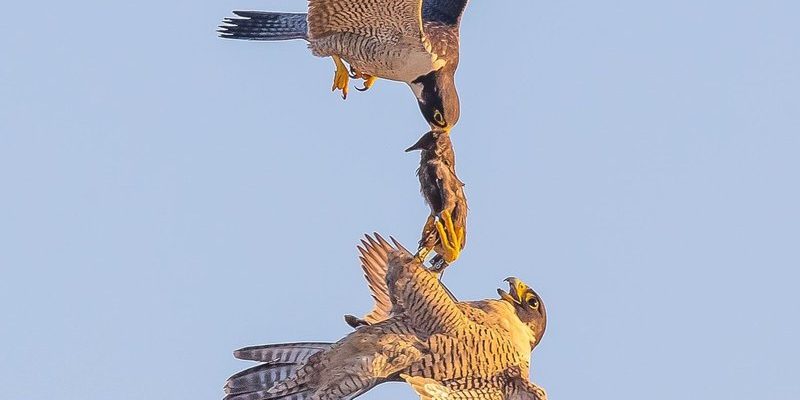
So, what exactly does a Peregrine Falcon eat, and how does it hunt? Picture them as the elite athletes of the bird world, honing their skills with precision and strategy. In this article, we’ll dive deep into the Peregrine Falcon’s diet and explore some of the fascinating hunting techniques they employ. You’ll gain a better understanding of what makes these birds so exceptional in the wild.
What Do Peregrine Falcons Eat?
Peregrine Falcons are primarily carnivorous, meaning their diet consists mainly of meat. These birds are known to feast on a variety of prey, but they have some favorites. Most often, they target medium-sized birds like pigeons, doves, and songbirds. It’s almost like they have a taste for fast food—only their “fast food” is the feathered kind!
You might be wondering how they manage to catch such agile creatures. Well, their keen eyesight plays a major role. Peregrine Falcons can spot a potential meal from miles away, thanks to their exceptional vision, which is about eight times better than that of humans. This remarkable ability allows them to plan their attack long before they dive, ensuring they have the upper hand.
When it comes to their diet, variety is essential. In addition to birds, they sometimes snack on small mammals, such as rabbits or squirrels, especially when their primary prey is scarce. This adaptability in their diet helps them thrive in diverse environments, from urban areas to rural landscapes.
Hunting Techniques: The Art of the Stooping Dive
One of the most extraordinary aspects of the Peregrine Falcon’s hunting strategy is its ability to perform a stoop. This spectacular dive is how they employ both speed and gravity to capture their prey. Imagine a roller coaster plummeting down that first big drop; that’s the intensity behind a falcon’s stoop!
During a stoop, the falcon folds its wings against its body to reduce air resistance, allowing it to accelerate rapidly. With this technique, they can reach those jaw-dropping speeds. Just before the falcon makes contact with its target, it will spread its wings and extend its talons to grab the prey. It’s a breathtaking sight that showcases both power and grace.
The timing of the attack is crucial. Peregrine Falcons often perch on high vantage points to scout for food. Once they identify a target, they’re calculating everything: from distance and speed to wind direction. It’s like they’re studying for a test, ensuring they get everything right before making their move.
Adaptations for Hunting
Peregrine Falcons have several physical adaptations that enhance their hunting proficiency. For starters, their strong and pointed wings allow for impressive maneuverability in the air. This is crucial when chasing fast-moving birds. They can zigzag through the sky with ease, dodging obstacles as they pursue their prey.
Their sharp talons are another vital tool in their hunting arsenal. These powerful claws can grip tightly and deliver a lethal blow. When a falcon catches its prey, it may use its beak to deliver a final kill. Because they often hunt in mid-air, their talons are designed to be lethal in mere moments.
Interestingly, Peregrine Falcons also have specialized nostrils that help them manage the intense speed of their dives. These unique structures reduce turbulence and allow the birds to breathe even at high velocities. It’s a fantastic example of how evolution tailors anatomy to improve hunting success.
Hunting in Urban Environments
You might think that hunting strategies would change significantly when Peregrine Falcons move into urban areas, but surprisingly, they adapt quite well. Cities can provide plenty of dining options, such as pigeons and starlings. However, the bustling environment presents its own challenges.
In urban settings, Peregrine Falcons are known to nest on tall buildings or bridges, mimicking their natural cliffside habitats. From these heights, they can scan the city for prey just as they would in nature. Instead of diving off cliffs, they utilize skyscrapers to launch their spectacular stoops.
Additionally, they’ve learned to navigate around human-made structures. The high-speed chase doesn’t just happen in open skies; these birds can maneuver between buildings, showcasing their adaptability and agility. It’s like watching a high-speed car chase through a city, where every turn is calculated and precise.
Feeding Habits and Social Behavior
Once a Peregrine Falcon catches its meal, the feeding ritual begins. Interestingly, these birds exhibit some social behaviors, especially during the breeding season. Mates may share food, feeding each other after a successful hunt, which helps strengthen their bond. You might say they’ve got a bit of a romantic side!
However, they can also be territorial. During the nesting season, a falcon will defend its territory aggressively against intruders, whether they are other peregrines or different bird species hoping to snatch a meal. This behavior is essential not only for protecting their young but also for ensuring they have enough resources to thrive.
When it comes to consuming their prey, Peregrine Falcons prefer to eat freshly caught birds. They typically tear apart their meals with their beaks, consuming the flesh and leaving behind the feathers. Watching this can remind you of a master chef preparing a fine dish—every part of the process is deliberate and focused.
Conservation and the Future of Peregrine Falcons
Despite their incredible hunting prowess, Peregrine Falcons faced significant threats from pesticides like DDT in the mid-20th century, leading to a drastic decline in their population. However, conservation efforts, including banning harmful pesticides and restoring nesting sites, have led to a remarkable recovery.
Today, they thrive in various environments, including cities, thanks to dedicated conservation groups. People often keep an eye out for these magnificent birds, providing a unique opportunity to connect with nature right in urban areas.
You might wonder what you can do to help. Supporting conservation efforts and being mindful of environmental impacts can help ensure that Peregrine Falcons continue to soar through our skies, showcasing their incredible hunting strategies and diet for generations to come.
The Peregrine Falcon is a true marvel of nature, with its unique adaptations, stunning hunting strategies, and diverse diet. Whether they’re swooping down on a pigeon or navigating the urban landscape, these birds remind us of the intricacies of the natural world. Understanding how they hunt and what they eat not only deepens our appreciation for these incredible creatures but also highlights the importance of conservation. By protecting their habitats and supporting efforts to maintain their populations, we can ensure that the Peregrine Falcon continues to be a symbol of speed, agility, and resilience in the wild.

